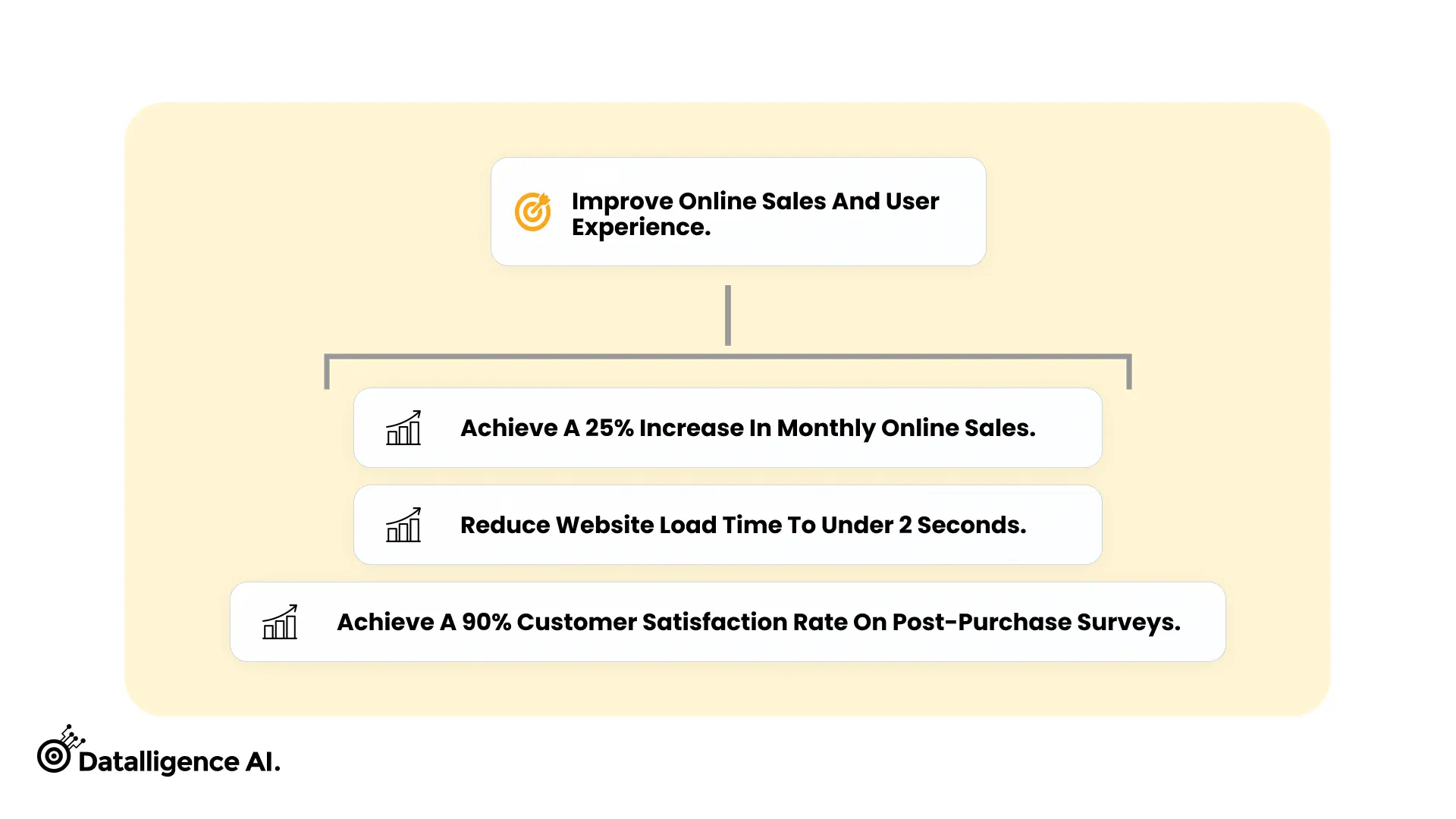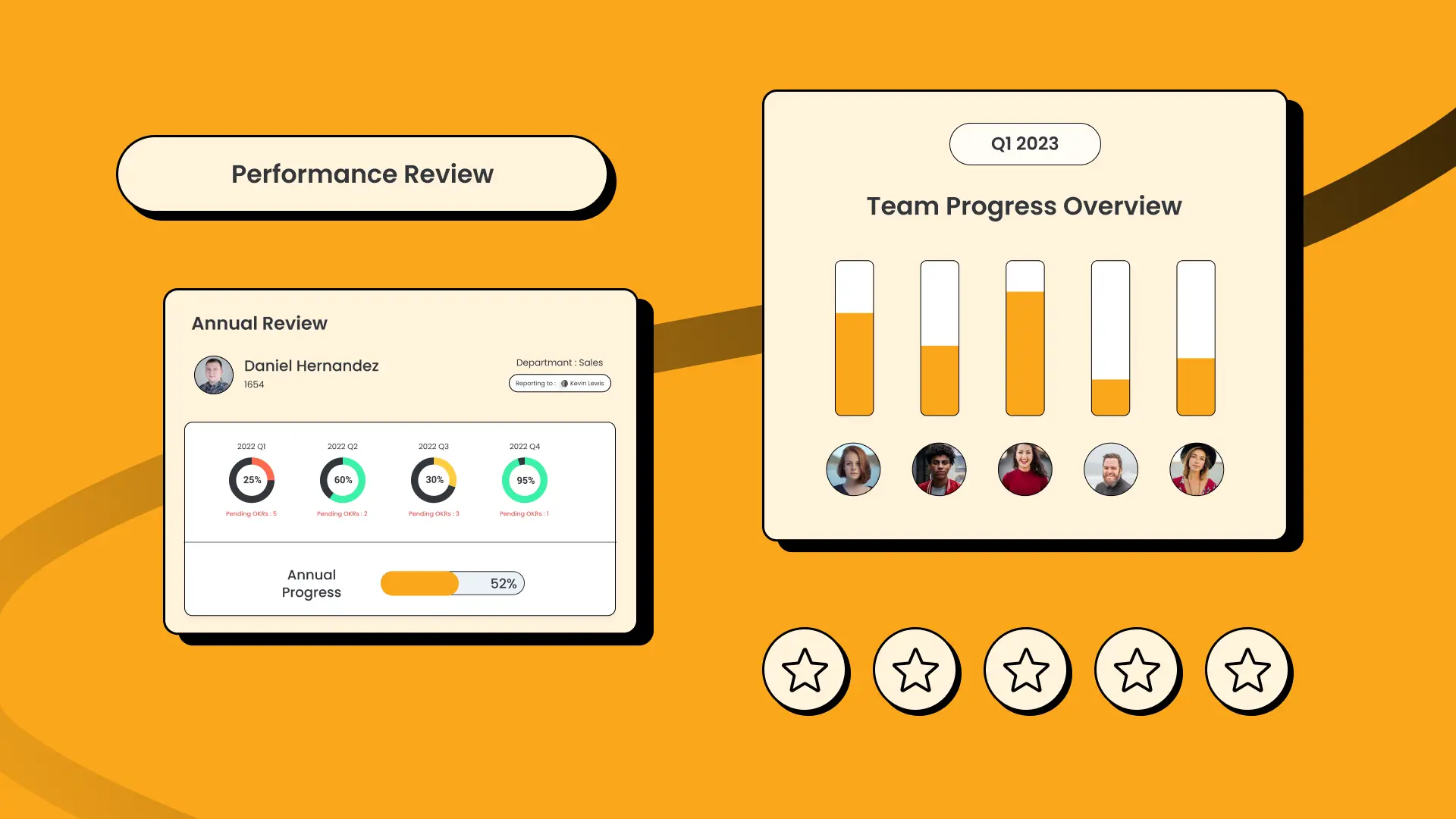In today’s fast-paced and competitive Information Technology (IT) landscape, effective goal-setting and performance management are essential for success. One proven methodology that enhances alignment and drives performance is OKR management software.
This article explores the transformative impact of OKR management software in IT, showcasing practical IT OKR examples and highlighting how Datalligence, a leading OKR platform, empowers organizations to streamline goal management and achieve strategic objectives efficiently.
Table of Contents
Understanding the Power of OKR Management Software

OKR Management revolves around a strategic framework called Objectives and Key Results (OKRs). The OKR framework is a powerful tool that helps organizations, teams, and individuals to define ambitious yet attainable goals, and track their progress towards these objectives.
The beauty of OKR Management lies in its simplicity and adaptability. Organizations can easily customize this framework to fit their unique needs and goals. It allows for clear articulation of the company’s objectives and key results, which are the specific, measurable actions required to achieve these objectives.
The Increasing Relevance of OKRs in the IT Sector
In a sector that is perpetually evolving like IT, the ability to adapt swiftly and effectively to changes is vital. The OKR framework provides a robust mechanism for promoting agility and adaptability, making it particularly relevant and beneficial in the IT sector.
By setting clear, quantifiable goals, IT teams can ensure they remain focused on what truly matters, even amidst the fast-paced and often chaotic nature of the IT landscape. The ability to measure progress towards these goals allows for timely adjustments, ensuring the team stays on track despite any unexpected challenges or changes that may arise.
OKR Management: A Catalyst for Digital Transformation
Digital transformation is no longer a luxury, but a necessity in today’s business world. The OKR framework plays a crucial role in facilitating this transformation. It provides a clear roadmap that guides businesses in integrating technology into their operations, thereby fundamentally reshaping how they function, create value, and interact with their customers.
Driving Digital Transformations with OKRs
The power of OKRs in driving digital transformations lies in their ability to make technology changes tangible. They provide a clear direction for digital transformation efforts, ensuring these efforts are aligned with the organization’s overall objectives.
For instance, instead of merely stating “We want to embrace digital technology,” an organization can use OKRs to specify: “We aim to improve our online sales by 20% by implementing a new e-commerce platform and enhancing user experience.” This level of specificity ensures everyone in the organization understands what is expected and can align their efforts accordingly.
The Role of OKRs in Performance Management
While OKRs are primarily a goal-setting tool, their role in performance management cannot be overlooked. The key results in OKRs are measurable, making it possible to track the progress of each team and individual toward their objectives. This provides a clear picture of performance, allowing managers to identify areas of success, as well as areas where improvement is needed.
Sustaining Performance with OKRs
Sustaining high-performance levels is a common challenge in many organizations. The OKR framework can be instrumental in addressing this challenge. It promotes employee engagement by ensuring everyone understands their role in achieving the organization’s objectives.
This clarity fosters accountability, driving individuals to put in their best efforts. Furthermore, the focus on measurable outcomes ensures progress is quantifiable, providing a clear indication of whether performance levels are being sustained.
IT OKR Examples: Amplifying Success with OKR Management
To illustrate the transformative potential of OKR Management in IT, let’s consider a few examples:


These examples highlight how the OKR framework can help IT teams set clear, measurable goals, and track their progress towards these goals.
IT OKR Examples
To better understand the application of OKRs in the IT sector, let’s consider a few examples.
For an IT company aiming to enhance its digital customer experience, the objective could be to “Deliver exceptional digital experiences that delight customers”. The key results could be to “Increase customer satisfaction scores for digital interactions by 15% within the next quarter” or to “Achieve a 20% increase in mobile app downloads or website traffic within the next six months”.
For an IT firm seeking to drive innovation through emerging technologies, the objective could be to “Leverage emerging technologies to drive innovation and create competitive advantages”. The key results could include “Identify and pilot at least 2 emerging technologies relevant to the organization’s industry or business model within the next year” or “Launch 1 minimum viable product (MVP) using an emerging technology within the next six months”.
Datalligence: A Game-Changer in OKR Management
Datalligence is a leading player in the field of OKR consulting and coaching. With its robust OKR software systems and a team of experienced OKR coaches, Datalligence has empowered numerous IT firms to effectively implement and manage their OKRs.
The OKR software system by Datalligence offers several benefits. It promotes transparency across levels, enables cross-team goal definition and deliverable mapping, and empowers employees to take ownership of their performance. It allows for two-way communication and constant feedback, making employees feel responsible and accountable for their work.
The Datalligence OKR software also integrates with ease, making it more than just an OKR software. With the support of Datalligence experts, organizations can seamlessly implement OKRs and drive their performance to new heights.
The Datalligence Advantage
Datalligence empowers organizations with its unique approach to OKR management. It emphasizes aligning and breaking silos, ensuring that teams work in harmony towards common objectives. It encourages outcome-based conversations through regular check-ins, helping to uncover risks before they escalate.
The Datalligence OKR software also enhances work prioritization. It creates a system for effectively prioritizing work, focusing on what matters most without losing sight of the long game. Consistent feedback and transparent metrics further aid in re-prioritizing work as needed.
Moreover, with Datalligence, tracking important outcomes becomes easier. OKRs that are tracked through the Datalligence software ensure that processes move as quickly as possible without compromising quality.
Datalligence: Your Partner in OKR Management and Digital Transformation
Understanding the benefits of OKRs is one thing, but effectively implementing and monitoring them is another. That’s where Datalligence comes into play. As a cutting-edge OKR platform, Datalligence is designed to assist organizations in setting, tracking, and achieving their objectives in the digital realm.
With intuitive dashboards, collaborative tools, and analytics capabilities, Datalligence makes the integration of OKRs in your digital transformation journey seamless and efficient. Whether you’re just beginning your digital transformation or looking to optimize your current strategies, Datalligence is the partner you need to ensure you’re on the path to success.
Conclusion
The integration of OKRs into IT Management is a game-changer. It propels organizations towards unprecedented heights by harnessing the power of technology with a clear, measurable vision. And with platforms like Datalligence by your side, the road to digital excellence becomes clearer and more achievable. Embrace the synergy of OKRs in IT Management and set your organization on a trajectory toward sustainable growth and success.
Don’t forget to share this post with those who could benefit from understanding the transformative potential of OKR Management in IT.











